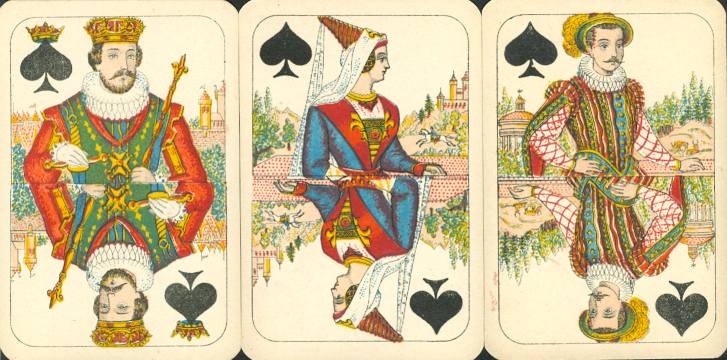
September 2010
The first weekend in September is always spend in Lille, France. As hotels will have to be booked over a year before the actual event, we nowadays go up and down on one day. Although Joop is definitely not an early riser, he gets up at 5 AM in order to be there at around 8 AM. The city is already filled with cars and people by then and the stalls are being filled with a diversity of objects. Fortunately the sun was up early too this year and that makes walking around the city center, browsing the stalls and displays, an agreeable activity. Lunch there means eating mussels and french fries, as the official name of the festivities is "Moules & Frites". Of course a little wine to wash it away and then more walking around until about 5 PM. By that time not only the legs are tired, but also the eyes. So many objects, junk and antiques surround those small rectangular treasures, that we're hunting for, that the concentration and focus is worn out by the end of the day. Still, sometimes you come back with some real treasures and that makes going there each year an adventure again.
Although a week later the monthly flea market in Utrecht was visited, this event didn't bring any real surprising decks.
Apparently this month is our "GeŻens-Seaux" month. In Lille we found an antique Lenormand fortune telling deck by this Belgian company from Bruges and on Ebay we bought a Moyen Age deck by that same manufacturer from a Dutch collector. And that's the deck that we would like to present here as Deck of the Month.

The pattern was first printed by Daveluy, a well known Belgian manufacturer from the 19th century, and published as Moyen Age (Mediaeval) from around 1850 - 1885. The courts are dressed up in mediaeval costumes and in the background mediaeval castles are depicted. But over the years images have been redesigned, courtly figures as well as backgrounds, and texts on the aces have been changed. At first the name of the deck "cartes moyen-age" was on the Ace of Diamonds, but later it wasn't mentioned anymore. The Daveluy deck was printed in chromolithography on porcelain paper and had a golden rim around the design. The deck here isn't that luxurious. It has been printed on ordinary card and there's no golden rim.
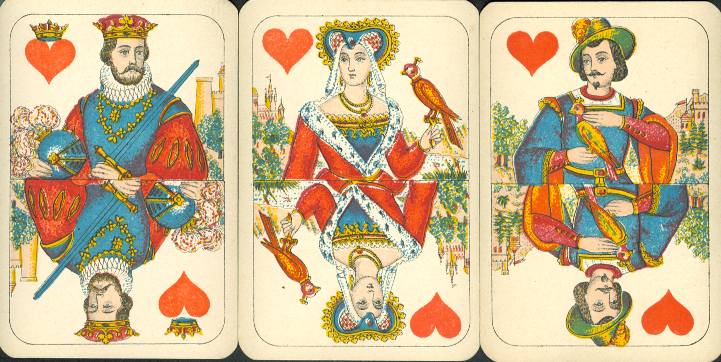
The Lithographic Printshop Daveluy was founded by Nicolas Alexis Antoine in Bruges in 1835. They became famous for their richly decorated porcelain cards (trade cards) and have produced over 30 different decks of playing cards too. In the last years the printshop was run by Edouard Daveluy and later his son Victor. Victor died in 1886 unexpectedly at the age of 40 and his widow continued the playing card manufacturing at the big printshop at the St. Jansstraat. But when her brother in law Jules Daveluy, her only son Amedťe and her father in law Edouard Daveluy die not long after each other in 1894, she didn't have the strenghth anymore to keep the printshop and it was taken over by the GeŻens-Seaux family in 1895. In this deck you find the name of Daveluy in connection with the "brevets" (licences) on the Ace of Hearts. But on the Ace of Clubs the name Geuens Seaux appears.
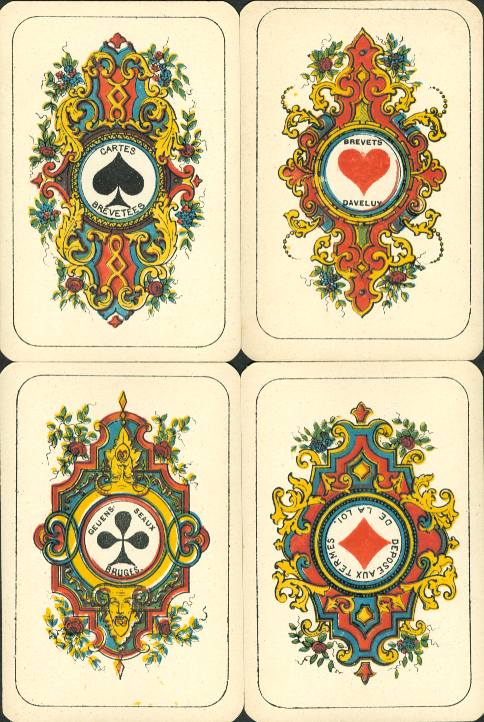
Edouard Benedictus Maria GeŻens was born in Bruges in 1840 and he married Emma Virginie Octavie Marie Seaux from Roeselaere in 1874. In 1875 they took over the printshop of Corneille de Moor, a former printer's colleague of Nicolas Daveluy, at 35 Philip Stockstraat. In 1895 the GeŻens Seaux family took over the playing card printshop of Daveluy at the St. Jansstraat, but it took them until July 1896 to rebuild and set up their business there. During the rebuilding of the printshop at the St. Jansstraat, it is likely that the GeŻens Seaux family commissioned the printing of playing cards to the lithographic printer Emile Bonte, at 51 Beenhouwersstraat in Bruges.
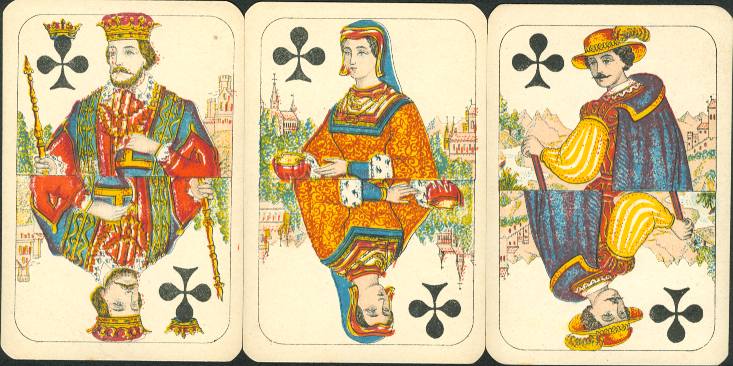
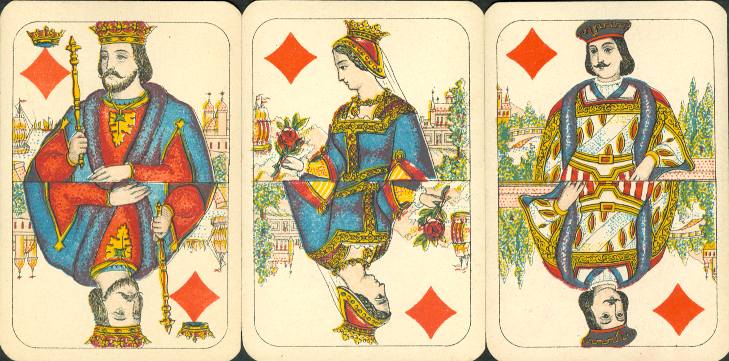
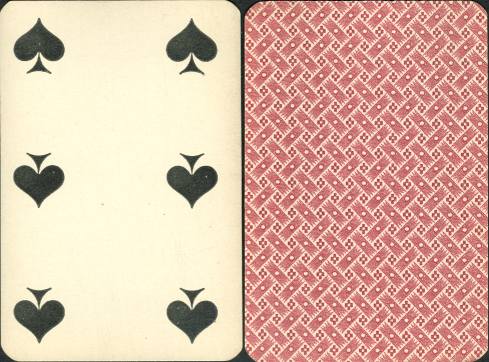
Dating this deck is relatively easy. The fact that in 1901 the GeŻens Seaux company went on under a new name, GeŻens-Willaert, means that all the decks that were published under the name of GeŻens-Seaux date from the period between 1895 and 1901.